2023 Bridges Conference Fashion Show
Rashmi Sunder-Raj
Designers
Rashmi Sunder-Raj
Mathematical Artist
Waterloo, Ontario, Canada
Biography
In my youth, I occasionally knitted, crocheted, or sewed items that I was able to wear. But my forays into design primarily involved making or modifying dresses to fit my proportions and somewhat non-standard sense of style in order to attend weddings in my 20s and 30s. I had a desire to incorporate lace into my dresses, but my taste ran towards geometric patterns and a preference to match the color of the lace to the fabrics, making it practically impossible to find appropriate ready-made lace. My experiments at the time led me into crocheting lace with thread and crocheting through sequins. More recently, I have learned to tat, and obtaining a finer hook has allowed me to crochet through seed beads, further expanding my lace-making options. Over the last few years, I have been exploring the properties of what I call “squiggles”, which are a type of geometric structure consisting of circular arcs switching back and forth according to some pattern of lengths. My current explorations in design are based on physically representing squiggles in various ways.
Looks
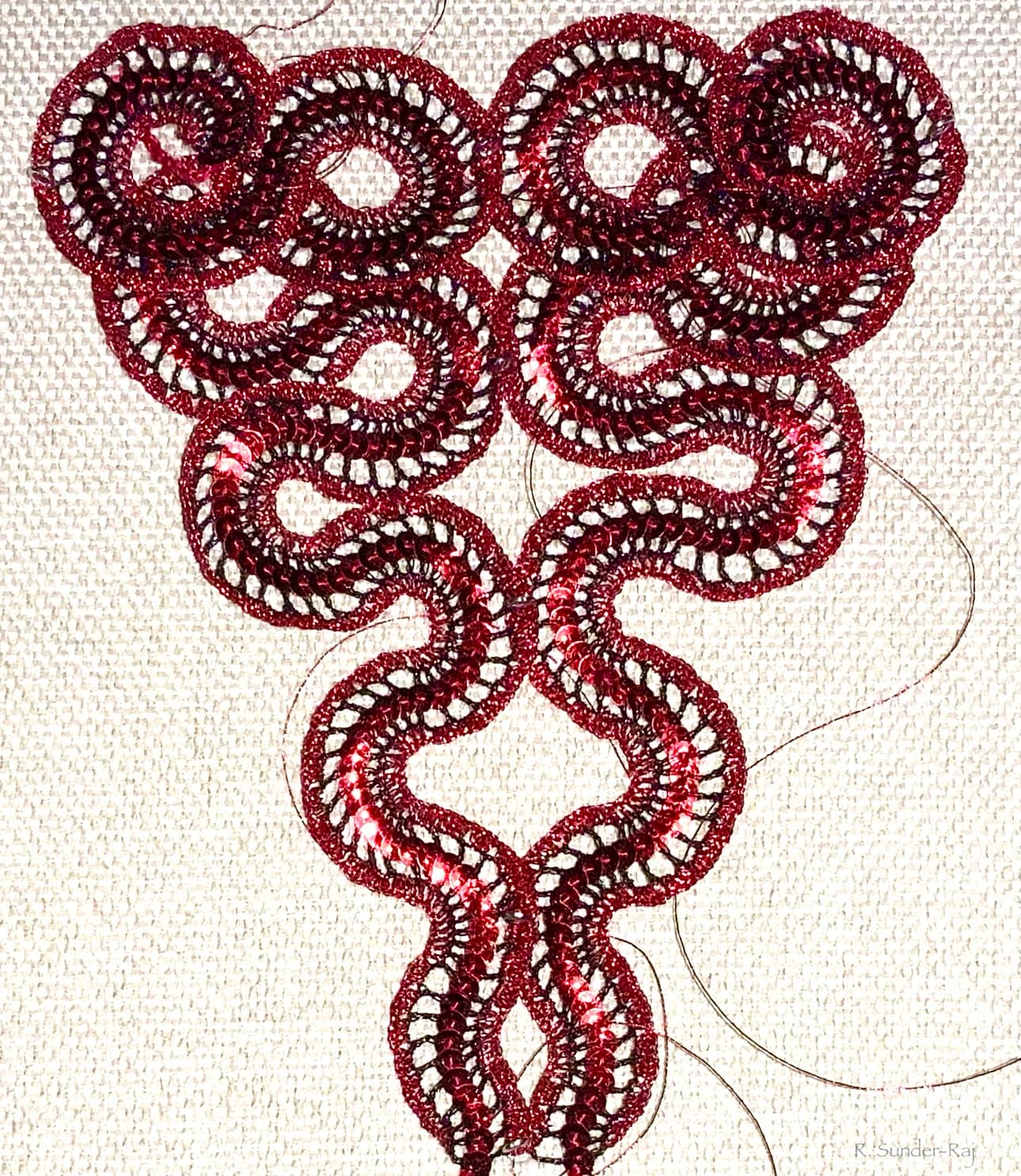
Close-up of new crocheted lace
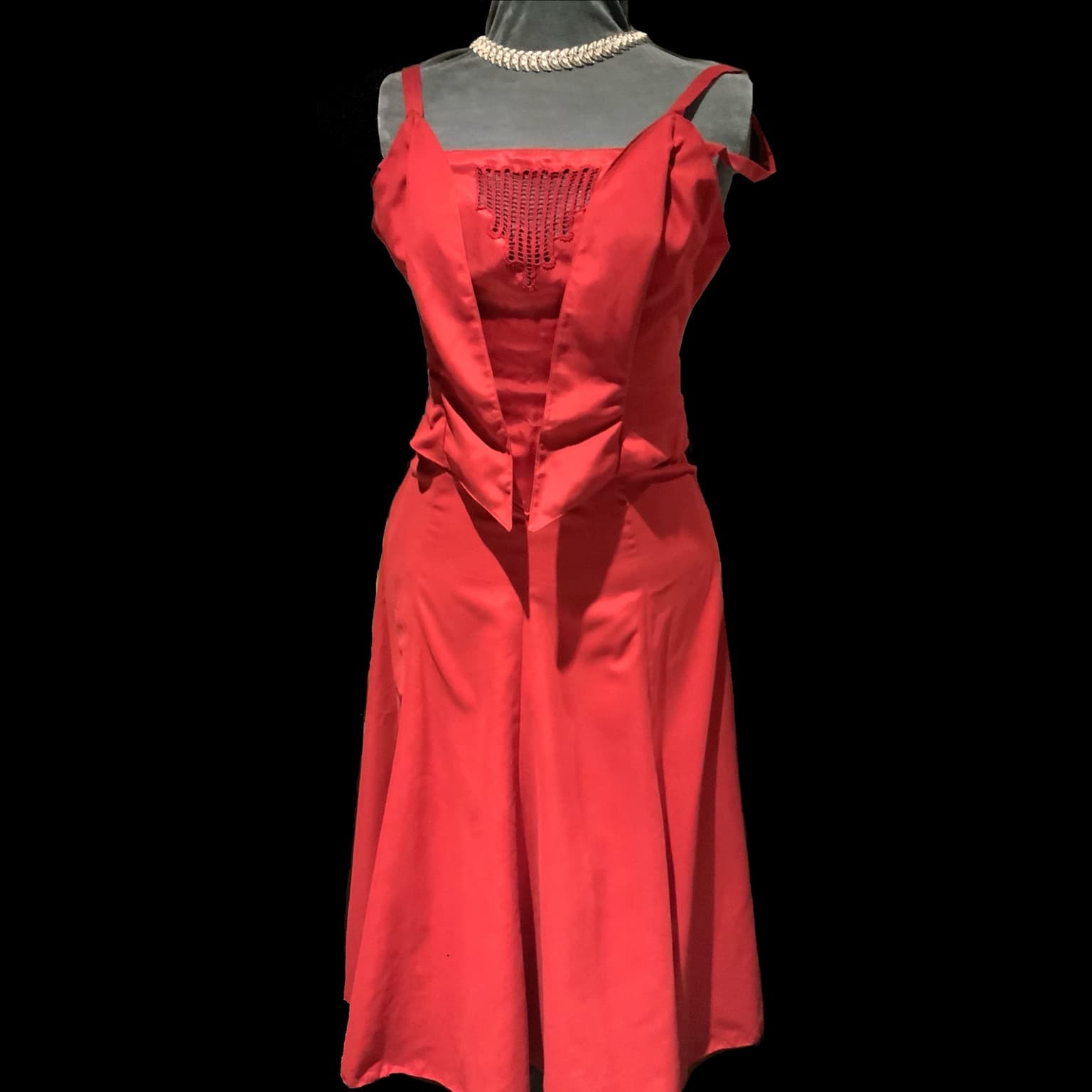
Original dress
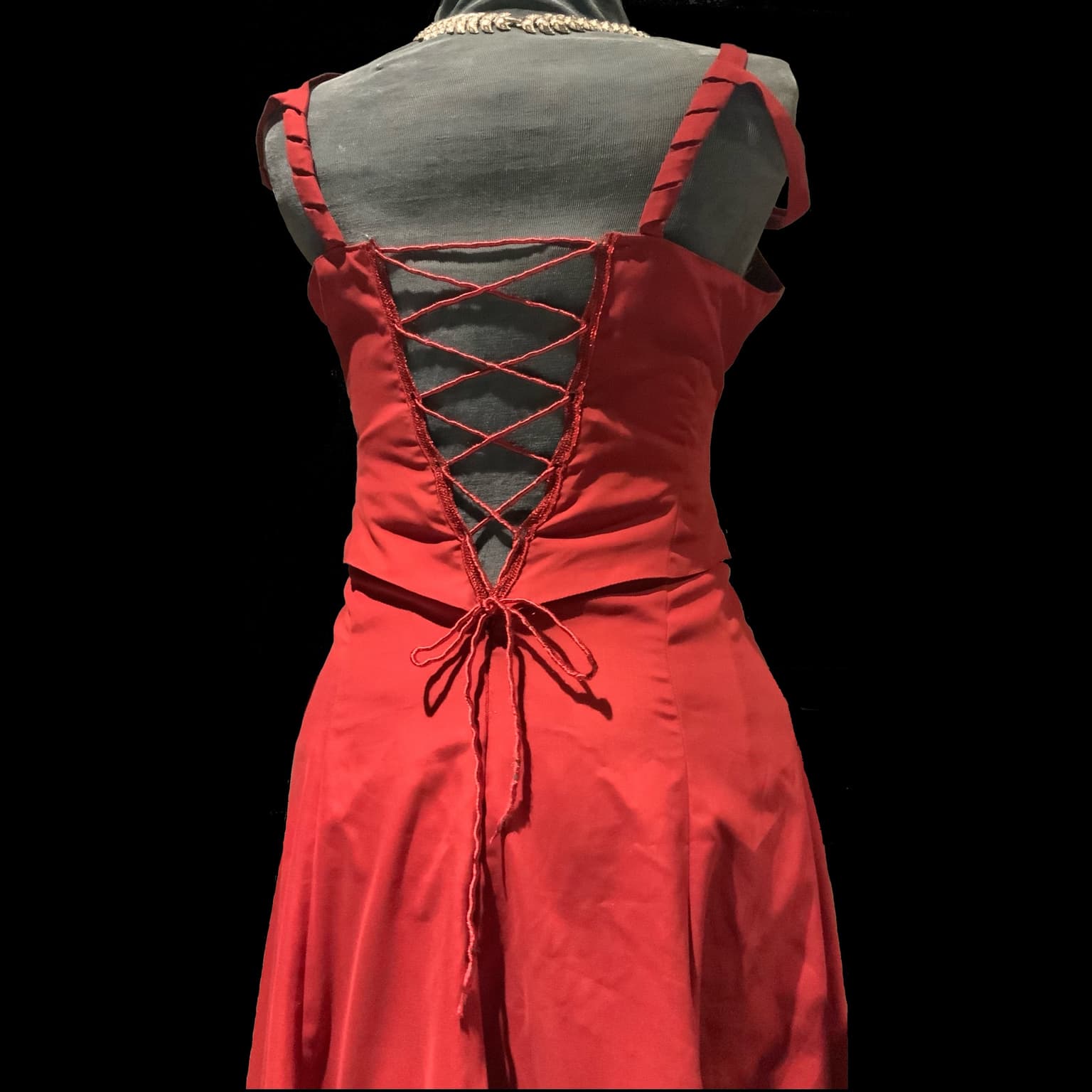
Back of dress
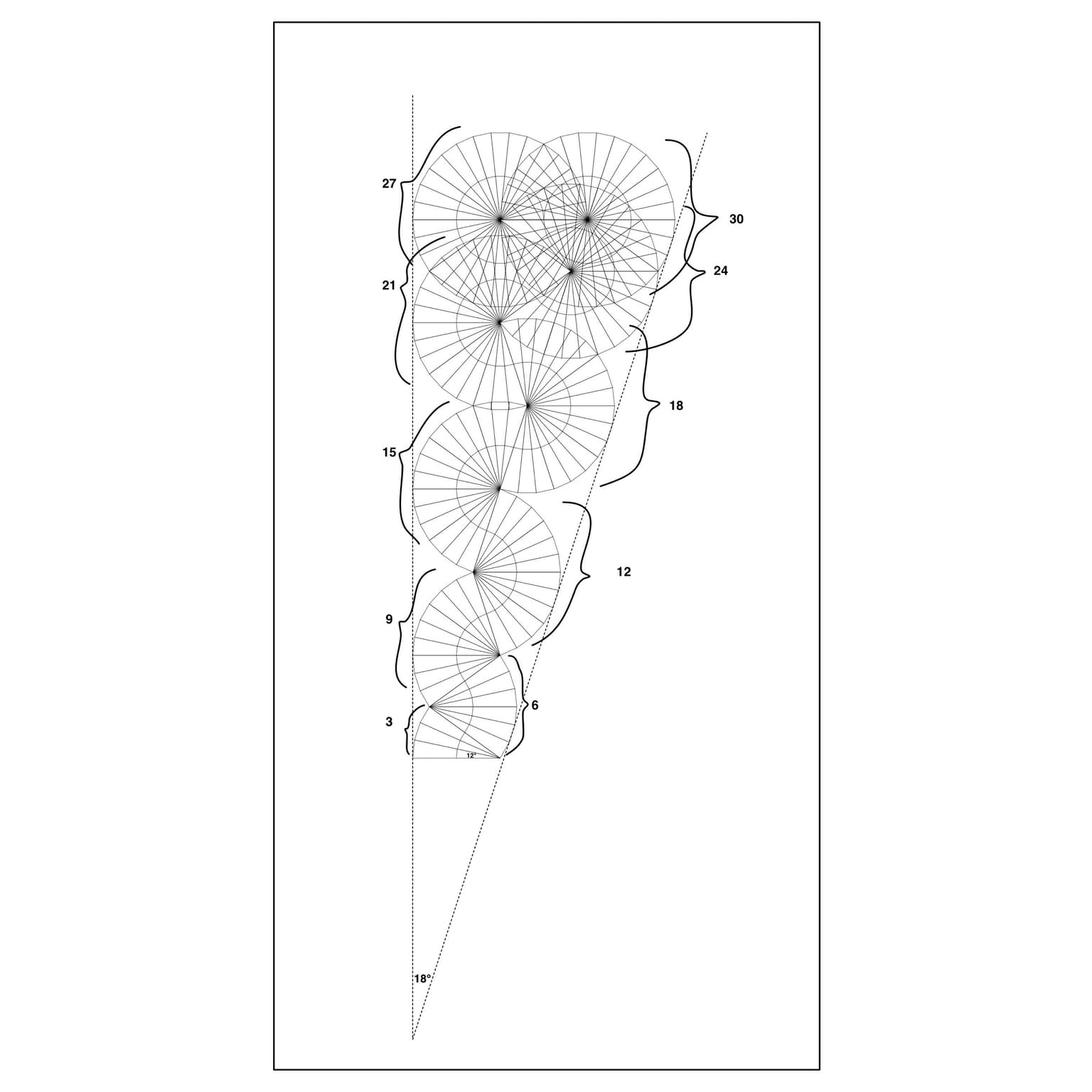
Extended wedge squiggle using 3,6,9,12,…,30 wedges with 12° angle
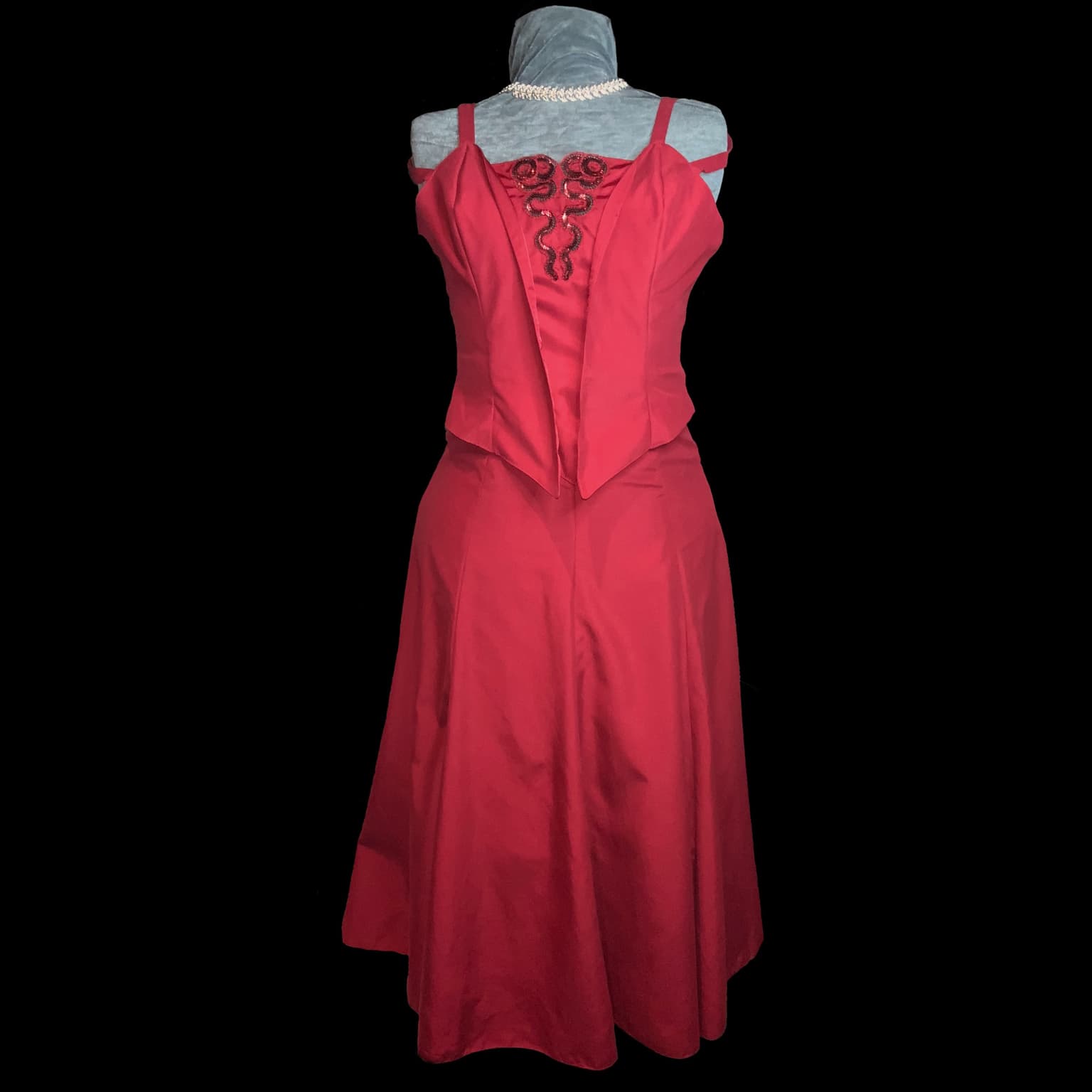
Current version of dress.
About the look
Something Old, Something Squiggly
Fabric, thread, sequins
Late 1990s/2023